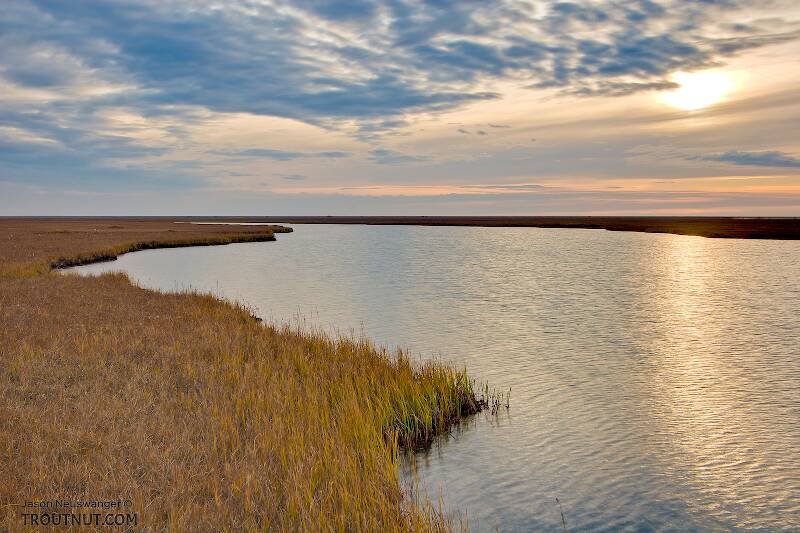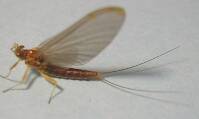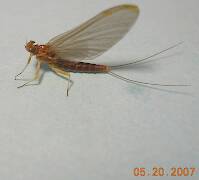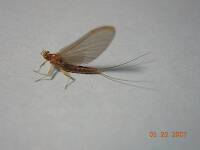
Salmonflies
Pteronarcys californica
The giant Salmonflies of the Western mountains are legendary for their proclivity to elicit consistent dry-fly action and ferocious strikes.
Featured on the forum

This specimen appears to be of the same species as this one collected in the same spot two months earlier. The identification of both is tentative. This one suffered some physical damage before being photographed, too, so the colors aren't totally natural. I was mostly photographing it to test out some new camera setting idea, which worked really well for a couple of closeups.

Troutnut is a project started in 2003 by salmonid ecologist Jason "Troutnut" Neuswanger to help anglers and
fly tyers unabashedly embrace the entomological side of the sport. Learn more about Troutnut or
support the project for an enhanced experience here.
Lastchance on Aug 30, 2010August 30th, 2010, 11:41 am EDT
Are these tiny BWOs that are coming off now and through the Fall a size 24? Also, can someone direct me to some photos of them? I saw one Saturday, which I thought was a Blue Quill Spinner, but now I think it was a BWO spinner. It had a dark thorax, a clear translucent body and another dark segment at the end.
Thanks,
Bruce
Thanks,
Bruce
GONZO on Aug 30, 2010August 30th, 2010, 12:48 pm EDT
Bruce,
The spinner you saw was probably a male. A #24 seems a little too small for most Blue Quills (Paraleptophlebia), though many of the males have the "Jenny Spinner" coloration that you describe. (Blue Quill spinners have three tails.) That coloration is also common to many male baetids (two-tailed BWOs, if you will). The females will usually have a (mostly) solid color body that will range from olive to brown to light orange. Here are some photos of a few baetids that show the "Jenny Spinner" coloration in the males:
http://bugguide.net/node/view/249088/bgimage
http://bugguide.net/node/view/249089/bgimage
http://bugguide.net/node/view/249110/bgimage
For contrast, here is the female of the first species:
http://bugguide.net/node/view/249090/bgimage
I hope that helps, at least a little.
The spinner you saw was probably a male. A #24 seems a little too small for most Blue Quills (Paraleptophlebia), though many of the males have the "Jenny Spinner" coloration that you describe. (Blue Quill spinners have three tails.) That coloration is also common to many male baetids (two-tailed BWOs, if you will). The females will usually have a (mostly) solid color body that will range from olive to brown to light orange. Here are some photos of a few baetids that show the "Jenny Spinner" coloration in the males:
http://bugguide.net/node/view/249088/bgimage
http://bugguide.net/node/view/249089/bgimage
http://bugguide.net/node/view/249110/bgimage
For contrast, here is the female of the first species:
http://bugguide.net/node/view/249090/bgimage
I hope that helps, at least a little.
Lastchance on Aug 30, 2010August 30th, 2010, 3:30 pm EDT
Hi Gonzo: That's exactly what I saw on Saturday. So the the onlyu difference between those BWOs and Blue Quill spinners is basically the number of tails? Like many others in my beginning years of bug watching I always mistook Blue Quills for Tricos.
Thanks,
Bruce
Thanks,
Bruce
Quick Reply
Related Discussions
Topic
Replies
Last Reply
4
Dec 22, 2009
by Oldredbarn
by Oldredbarn
1
Apr 18, 2007
by Troutnut
by Troutnut




